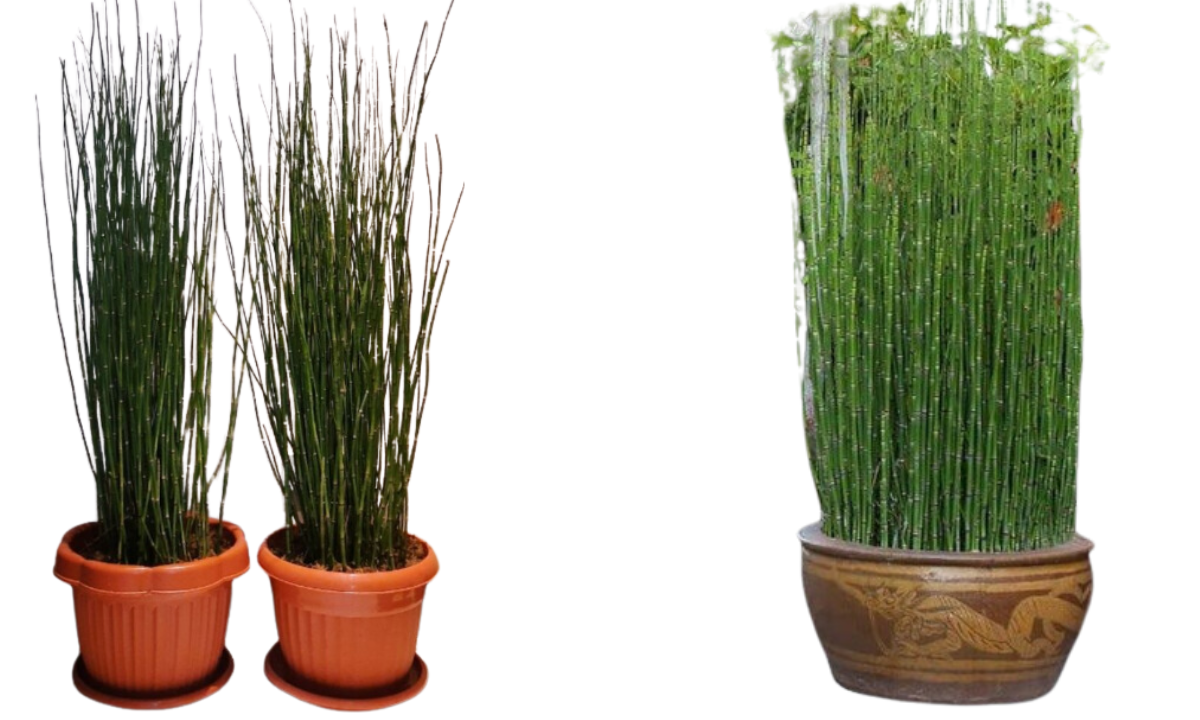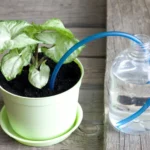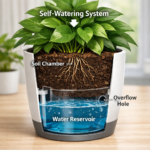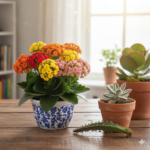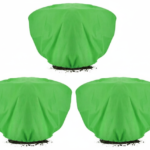Horsetail, an ancient plant with unique, bamboo-like stems, can be a stunning addition to your garden. Known for its resilience and easy adaptability, horsetail thrives in various conditions, particularly in moist and partially shaded environments. However, growing horsetail has challenges; understanding its specific needs is essential for success. From proper planting techniques to adequate care and maintenance, there are several steps to ensure your horsetail grows healthy and lush. This guide will walk you through everything you need to know, including ideal soil conditions, watering schedules, and how to troubleshoot common problems like pests and overgrowth. With the right tips and techniques, you’ll be well on your way to cultivating a thriving horsetail plant that enhances your garden’s aesthetic and biodiversity.
What is Horsetail?

Horsetail (Equisetum) is a unique and ancient plant known for its tall, jointed stems and feathery appearance. Often resembling bamboo, horsetail has existed for over 100 million years, making it one of the oldest plants on Earth. It thrives in moist environments like wetlands and riverbanks but can also adapt to garden settings. Horsetail is a non-flowering, perennial plant that spreads through rhizomes, which are underground stems. These rhizomes can grow extensively, allowing horsetail to spread rapidly, sometimes making it invasive. Despite this, it’s valued for its ornamental qualities and traditional medicinal uses, such as promoting bone health.
Varieties of Horsetail
There are several varieties of horsetail, but the most commonly grown in gardens include:
- Field Horsetail (Equisetum arvense): This variety has slender, feathery stems and grows well in damp, shaded areas. It’s often used for its medicinal properties.
- Scouring Rush (Equisetum hyemale): Known for its tall, bamboo-like stems, this variety is ideal for ornamental purposes and grows best in water gardens or alongside ponds.
Choosing the Right Location

Selecting the right location is crucial for the successful growth of horsetail. This plant thrives in specific environments, and providing the right conditions ensures it stays healthy and vibrant.
Light Requirements
Horsetail is adaptable when it comes to light, but it prefers:
- Partial Shade: Ideal for locations with filtered sunlight or shaded areas during the hottest day. This helps prevent drying out.
- Full Sun: Horsetail can grow in full sun if the soil remains consistently moist. Monitoring water levels closely is essential, especially during hot, dry periods.
Soil Conditions
Horsetail grows best in soil that mimics its natural wetland habitat:
- Moisture-Rich Soil: The soil should be kept consistently damp. Horsetail thrives near ponds, marshes, or water gardens.
- Well-Drained Soil: Despite loving moisture, horsetail doesn’t tolerate stagnant water. Ensure proper drainage to prevent root rot.
- Acidic to Neutral pH: Horsetail prefers slightly acidic to neutral soils (pH 6.0-7.0), so it’s essential to test your soil and amend it if needed.
- Sandy or Loamy Texture: These soil types support drainage while retaining enough moisture, making them ideal for horsetail growth.
Planting Horsetail
Planting horsetail involves understanding its growth habits and using the best techniques to ensure a healthy start. This section covers propagation methods and planting techniques to help your horsetail thrive.
Propagation Methods
Horsetail is primarily propagated through division and rhizomes:
- Division: In early spring, dig up an established horsetail clump and carefully separate it into smaller sections. Each section should include a part of the rhizome and some roots. Replant these divisions immediately for the best results.
- Rhizomes: Horsetail spreads via underground stems called rhizomes. You can take sections of rhizomes (3-4 inches long) and plant them directly into the soil. Ensure the rhizomes are healthy and free from damage to promote successful growth.
Planting Techniques
Proper planting techniques are crucial for horsetail’s growth:
- Spacing: Horsetail spreads rapidly, so space plants about 12-18 inches apart. This distance allows enough room for growth while preventing overcrowding.
- Depth: Plant divisions or rhizomes 2-3 inches deep in the soil. This depth ensures the roots are established quickly, and the plant remains stable.
- Mulching: Applying a layer of mulch can help retain soil moisture, which is essential for horsetail growth.
Care And Maintenance
Watering Needs
Horsetail plants thrive in moist conditions and require consistent watering to mimic their natural habitat, often near wetlands or ponds. Ensure the soil remains wet, but avoid letting the plant sit in stagnant water. It’s essential to use well-draining soil that retains moisture without becoming waterlogged. In containers, place a saucer underneath to hold some excess water for the roots to absorb later, but make sure to empty it occasionally to prevent root rot. If grown indoors, misting the plant can help maintain a humid environment. Increase watering frequency during dry or hot weather to prevent the plant from drying out, as horsetail can be sensitive to lack of water.
Fertilization
Horsetail plants generally do not require heavy fertilization since they are hardy and can grow in nutrient-poor soil. However, to promote lush growth, especially in poor soil, you can apply a balanced liquid fertilizer once a month during the growing season (spring to summer). A low-nitrogen fertilizer is ideal to avoid excessive leaf growth. Over-fertilizing can harm the plant, so use sparingly. If planted outdoors, composting once or twice a year can provide slow-releasing nutrients, enhancing soil fertility without frequent feeding.
Pruning and Controlling Growth
Horsetail can be invasive and spread rapidly, so regular pruning is necessary to keep its growth under control. Trim back the stems to maintain the desired height and appearance, especially in garden settings. Cut off dead or yellowing stems to promote healthy new growth. In containers, pruning helps prevent overcrowding and root-binding. Horsetail spreads through underground rhizomes, so if planted in the ground, consider installing barriers to prevent unwanted spread. Invasive growth can be managed by removing excess stems and monitoring the plant’s root zone. Keep an eye on its growth patterns, prune aggressively to maintain its structure, and prevent it from taking over garden spaces.
Identifying Problems
Horsetail plants are generally hardy and resistant to most pests and diseases but occasionally face issues. One common problem is yellowing stems, which could indicate overwatering, poor drainage, or a lack of nutrients. Pests like aphids, spider mites, and mealybugs can sometimes infest horsetail plants, mainly if grown indoors or in poorly ventilated areas. You may notice small insects on the stems or leaves or a sticky residue (honeydew) left by pests like aphids. Webbing on the plant can be a sign of spider mites. Stunted growth or discolored stems may indicate root rot resulting from overly wet conditions. It’s essential to check the plant regularly for signs of unusual changes in color, growth, or texture, as early detection makes treatment more accessible.
Prevention and Treatment
To prevent common pests and diseases, maintain proper care by providing adequate drainage, consistent watering, and avoiding waterlogged soil. Regularly inspect the plant for pests. If pests are found, remove them manually using a solid stream of water or apply insecticidal soap or neem oil for treatment. Increase humidity and clean the plant with a damp cloth for spider mites. To prevent diseases like root rot, ensure your horsetail is planted in well-draining soil, and avoid overwatering. Trimming damaged or infested stems helps contain the spread of pests or diseases. Additionally, improving air circulation around the plant reduces the likelihood of mold or fungal infections. Regular maintenance and prompt action are crucial to keeping your horsetail plant healthy and vibrant.
How to Harvest?
Horsetail plants are relatively easy to harvest. The best time to harvest is during late spring to early summer, when the plant is at its peak growth. To harvest, cut the green, upright stems with sharp garden shears or scissors about 4 to 6 inches from the base. It’s important to avoid pulling the stems by hand, as this can damage the rhizomes and affect future growth. Always leave a portion of the plant intact to allow it to continue growing and regenerating. After harvesting, rinse the stems thoroughly to remove any dirt or insects. You can use the fresh stems immediately or dry them by hanging them in a warm, dry place for several days. Once dried, the horsetail can be stored in an airtight container for later use. Harvesting small amounts periodically ensures the plant remains healthy and continues producing new growth.
Used in Herbal Remedies and Crafts
Horsetail has been used in herbal remedies for centuries due to its high silica content, which is believed to support skin, hair, and bone health. It is often used as a natural diuretic to treat conditions like urinary tract infections, kidney stones, and bladder issues. Horsetail can be made into teas, tinctures, or infusions. Simply steep the fresh or dried stems in hot water for about 10 minutes to make an herbal tea that aids digestion, promotes healthy nails and helps heal wounds.
Horsetail’s rough, abrasive texture makes it a natural scouring tool in crafts. It can polish wood and metal and even sand down small surfaces. Historically, horsetail was used to clean pots and pans. Today, it is sometimes incorporated into natural brush products for a similar purpose. The plant’s hollow stems are also used in floral arrangements and crafts, adding a unique texture and aesthetic appeal.
Is horsetail safe for everyone?

Horsetail is unsafe for everyone, and specific individuals should avoid its use. While it has many potential health benefits, it contains compounds that can pose risks to particular groups of people. For example, horsetail contains thiaminase, an enzyme that breaks down thiamine (vitamin B1), which can lead to a deficiency if used long-term or in large amounts. This makes it unsuitable for individuals with vitamin B1 deficiency or those at risk of developing one.
Pregnant and breastfeeding women are advised to avoid horsetail, as its safety for these groups has not been established. Additionally, people with kidney disease or those taking medications that affect the kidneys should be cautious, as horsetail has diuretic properties that could exacerbate kidney issues.
Individuals on blood pressure medications or diuretics should consult their healthcare provider before using horsetail, as it may interfere with these medications. Likewise, people with low potassium levels or electrolyte imbalances should avoid it due to its potential to worsen these conditions.
Conclusion
Horsetail (Equisetum arvense) is a unique and ancient plant with a rich history of medicinal and therapeutic use. Known for its high silica content, horsetail is commonly used to promote skin, hair, and nail health and is also considered beneficial for bone strengthening, wound healing, and kidney function. It is available in various forms, such as teas, tinctures, capsules, and extracts, making it accessible for multiple uses. However, while horsetail has many potential benefits, it’s essential to use it carefully, as prolonged use or excessive consumption can lead to side effects such as thiamine deficiency or electrolyte imbalances. Consulting a healthcare professional before starting horsetail as a supplement is recommended, especially for those who are pregnant, nursing, or taking other medications.
Frequently Asked Questions (FAQ)
1. What are the benefits of the horsetail plant?
Horsetail is known for its rich silica content, which helps support healthy hair, skin, nails, and bones. It also has diuretic properties, which promote urinary health and may assist in flushing out toxins.
2. How do I use horsetail?
Horsetail can be consumed as a tea, tincture, or capsule. It can also be applied topically in the form of ointments or extracts to promote skin healing or hair growth.
3. Are there any side effects to using horsetail?
Yes, prolonged or excessive use of horsetail can cause a deficiency in thiamine (Vitamin B1) or lead to electrolyte imbalances. People with kidney issues or on diuretic medications should use caution.
4. Can horsetail help with hair growth?
Horsetail’s high silica content is believed to support hair growth by strengthening hair strands and promoting scalp health, though results may vary from person to person.
6. How long can I use horsetail safely?
Horsetail should be used in moderation, generally for short-term periods (no more than 6 weeks), to avoid the risk of thiamine deficiency. It’s best to take breaks in between periods of use.
7. Can I use horsetail if I have a medical condition?
People with conditions such as kidney disease or low blood pressure should consult with their healthcare provider before using horsetail due to its diuretic effects.
8. Where can I purchase horsetail?
Horsetail, including dried herbs, capsules, tinctures, and extracts, is available in health food stores, pharmacies, or online.

